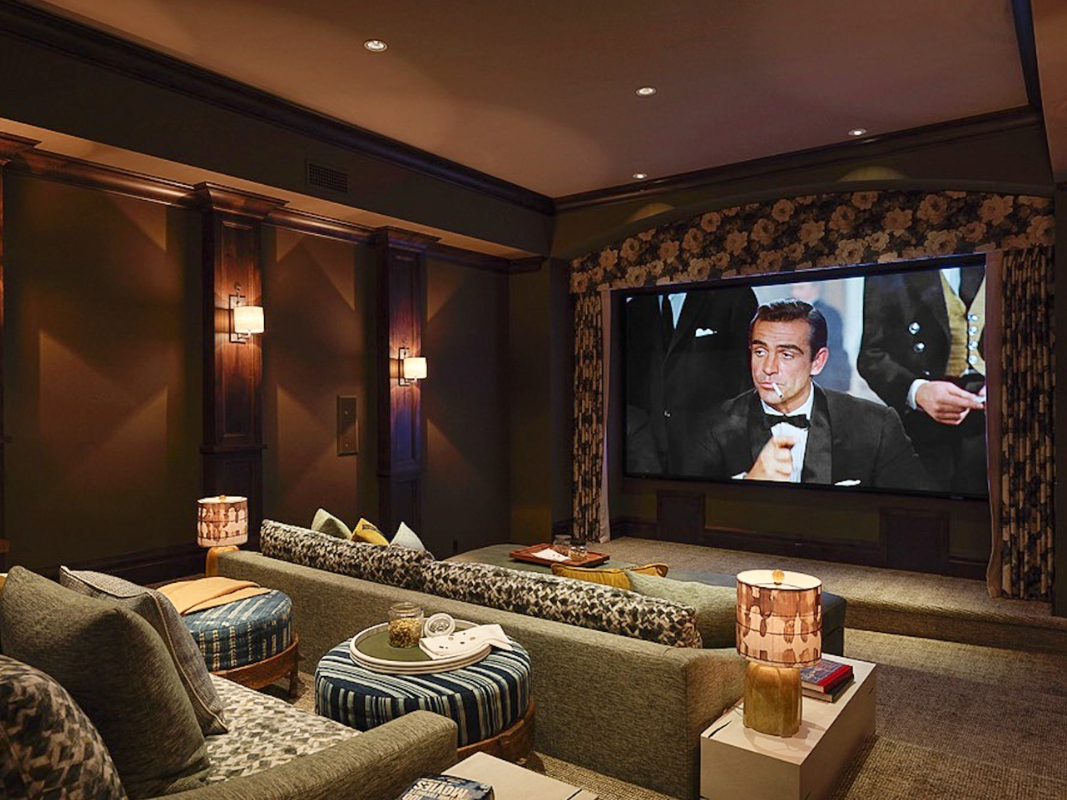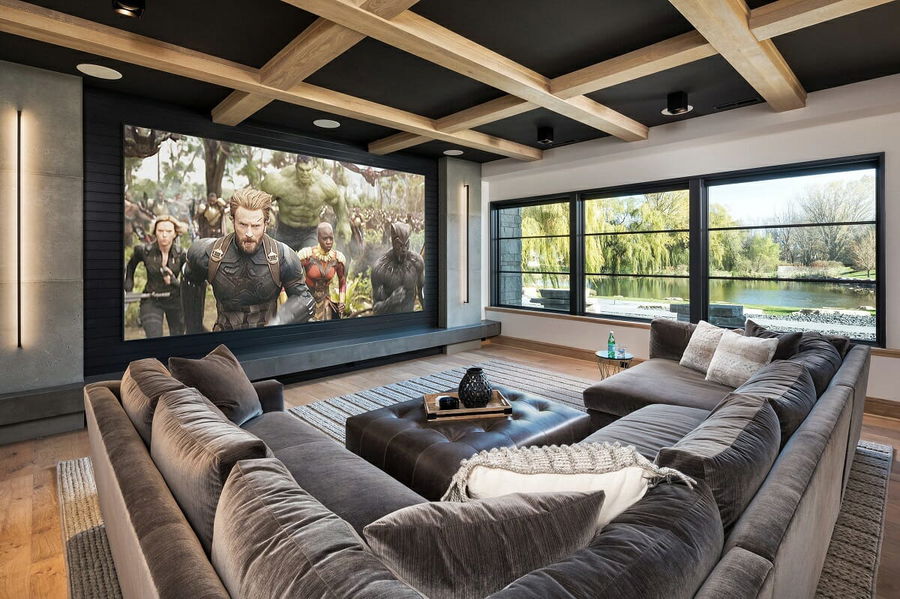How to Locate the Top Home Theater Tampa Installation Professionals
Wiki Article
Home Theater 101: Every Little Thing You Need to Know for a Cinematic Experience in the house
Creating a home theater that matches the motion picture experience of a business theater includes mindful consideration of multiple components, including screen option, stereo, and room layout. Each element plays a critical function in accomplishing the wanted ambiance and capability. Whether you are pondering the optimal display dimension or the details of surround sound, recognizing these principles is crucial. As we explore these crucial components, it becomes evident that the choices made can significantly impact your total watching experience, leaving one to consider exactly how these decisions will shape your individual movie theater.Choosing the Right Screen
When establishing a home cinema, choosing the right display can make or break the watching experience - home theater design tampa. The display works as the focal point of your setup, affecting photo quality, watching angles, and general aesthetic. Secret factors to take into consideration include display dimension, resolution, and typeFirst, identify the proper display dimension based on your room dimensions and seating distance. Next, select in between different screen kinds, such as fixed-frame, mechanized, or retractable displays, each offering distinct advantages.
Resolution is one more essential factor. For a really immersive experience, think about a display made for 4K or also 8K content, guaranteeing intensity and clearness. In addition, take into consideration the display's gain, which influences illumination and comparison; a greater gain can boost brightness in well-lit spaces, while a lower gain may be preferable for darker atmospheres.
Choosing Audio Equipment
Audio equipment is an important element of any kind of home movie theater system, substantially improving the general viewing experience. The selection of audio gear can determine the depth, clarity, and immersion of sound, vital for producing a cinematic environment.When choosing audio equipment, consider a border audio system, which commonly includes a receiver, several audio speakers, and a subwoofer. A 5.1 or 7.1 network system is advised, where the first number represents the speakers and the 2nd the speaker, offering an immersive soundscape. The receiver is the heart of the system, managing audio and video clip signals, and need to sustain contemporary layouts like Dolby Atmos for an improved spatial experience.
Quality speakers are essential; search for versions that provide a well balanced noise profile with excellent bass action. Floor-standing speakers can generate richer noise, while shelf choices save room. Additionally, take into consideration wireless alternatives for simplicity of installation, although wired systems usually provide superior efficiency.

Ideal Seating Arrangements
Creating an ideal home cinema experience pivots substantially on ideal seating arrangements. The arrangement of seats plays a crucial role in both convenience and watching high quality, directly influencing the total motion picture experience.First, think about the screen dimension and checking out distance. A common guideline is to place seats at a range around 1.5 to 2.5 times the diagonal dimension of the screen. This makes certain an immersive experience without straining the eyes.
Following, altitude is essential. If your seating remains in a tiered layout, the back rows must be more than the front to stay clear of obstructions. For flat seating, guarantee that the front row is not as well near to the display, and that everybody has a clear line of sight.
In addition, think about the setup in regards to social dynamics. Team seats can enhance the public experience, while individual seats might be liked for personal viewing.

Lastly, focus on comfort with ergonomic seating that sustains extensive viewing periods. Including recliners or supported seats can dramatically improve the experience, making the home movie theater a recommended destination for both enjoyment and relaxation.
Lighting and Atmosphere
Efficient illumination and ambiance are necessary elements of a properly designed home movie theater, as they considerably influence the seeing experience. The right illumination can enhance the motion picture feeling, while poor choices can diminish it. For ideal outcomes, take into consideration a split illumination method that includes ambient, job, and accent illumination.Ambient illumination offers basic lighting, ensuring that the space is not totally dark, which can stress the eyes. Dimmer buttons are very suggested, permitting for changes based on the content being seen. Task lighting, such as wall sconces or flooring lights, provides functional illumination for activities like reading or browsing the area without interfering with the general environment.
Accent lighting can be used to highlight architectural functions or develop prime focus, adding deepness and interest to the space. LED strip lights behind screens or along racks can provide a subtle radiance that improves the aesthetic experience without overwhelming the visitor.

Wiring and Installation Tips
A well-planned electrical wiring setup is critical for accomplishing optimum efficiency in your house theater system. Appropriate circuitry not only makes certain high-grade audio and video signals but also enhances the overall aesthetic of your room. Begin by drawing up your format, recognizing where each component will certainly be placed, including your display, audio speakers, and receiver.When choosing wires, prioritize premium, properly evaluated electrical wiring to reduce signal loss. HDMI cables ought to be used for video links, while audio speaker wire must match the requirements of your speakers and amplifier. Select in-wall rated wires to follow security requirements and maintain a clean look.

Conclusion
In recap, developing an exceptional home theater experience requires mindful consideration of various aspects, consisting of screen choice, audio tools, seating plans, lights, and electrical wiring. By prioritizing these factors, a cinematic atmosphere can be successfully replicated, enabling for immersive checking out experiences that measure up to traditional cinema settings.Creating a home movie theater that matches the motion picture experience of an industrial theatre involves careful factor to consider of numerous parts, consisting of display option, sound systems, and room design.When setting up a home movie theater, selecting the ideal display can make or damage the seeing experience. Next, choose between different screen kinds, such as fixed-frame, motorized, or retracting screens, each offering distinctive advantages. For an absolutely immersive experience, take into consideration a display developed for 4K or also 8K content, making certain sharpness and quality.In summary, creating an outstanding home movie theater experience calls for careful consideration of numerous components, including screen option, audio devices, seating setups, lights, and wiring.
Report this wiki page